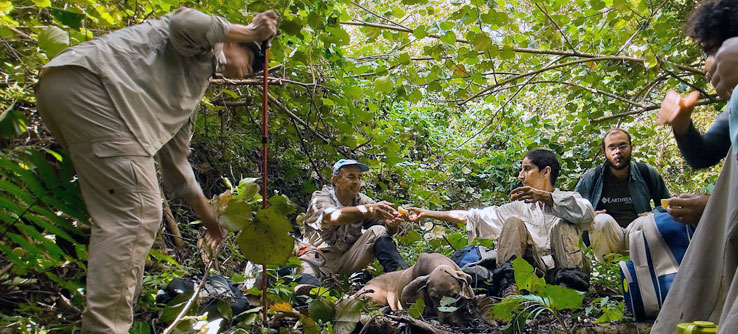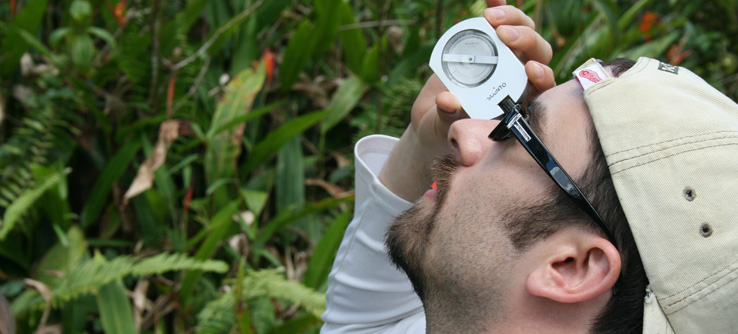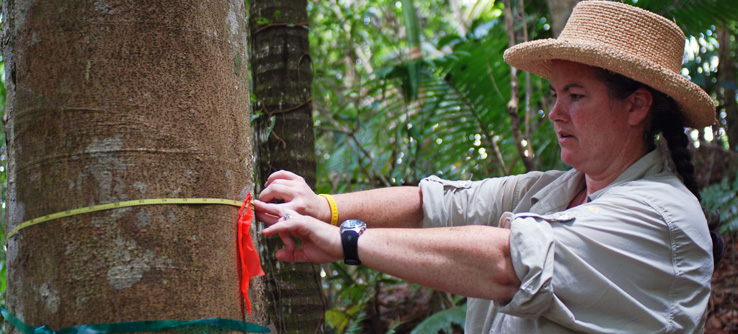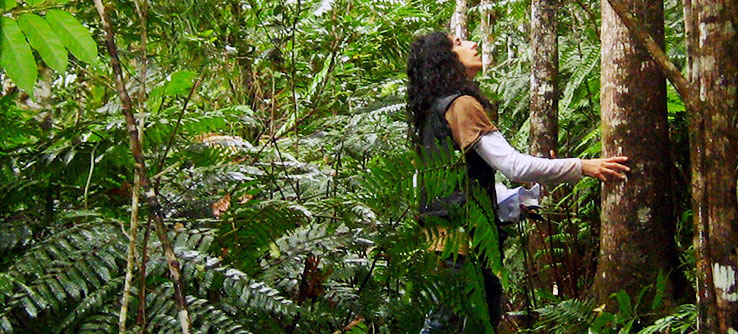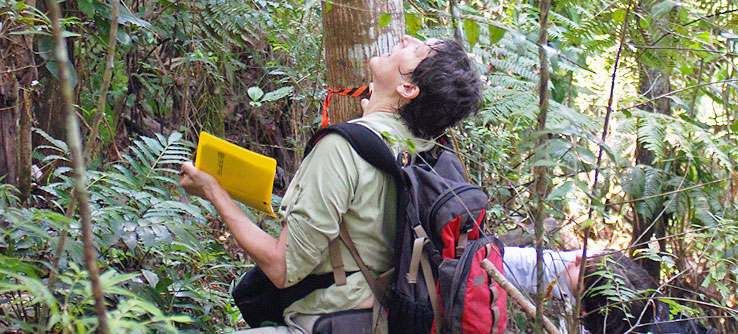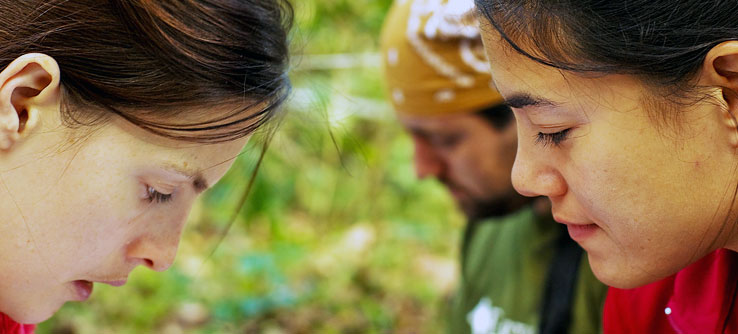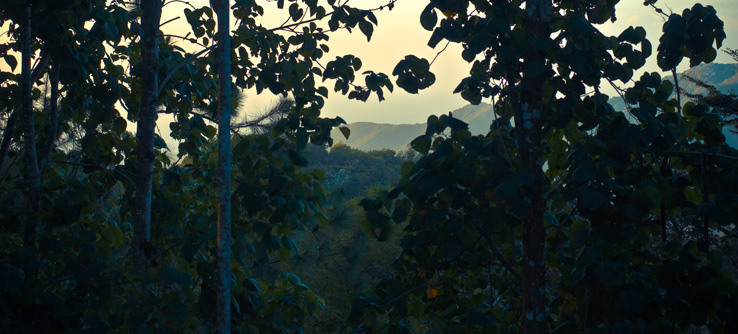Author
M. Malagnoux, E.H. Sène and N. Atzmon
Michel Malagnoux, prior to his retirement in September 2007, was Forestry Officer (Arid Zones) in the Forest Conservation Service, FAO Forestry Department.
El Hadji Sène was Director of the Forest Resources Division, FAO Forestry Department, until his retirement in 2004, and currently resides in Dakar, Senegal.
Nir Atzmon is in the Department of Agronomy and Natural Resources, Institute of Field and Garden Crops, Agriculture Research Organization, Volcani Centre, Bet-Dagan, Israel.
This article is adapted from Malagnoux, 2007.
In arid lands, where competition for water is acute, trees should be planted only when and where necessary and possible.
Arid lands are among the world’s most fragile ecosystems, made more so by periodic droughts and increasing overexploitation of meagre resources. Arid and semi-arid lands cover around one-third of the world’s land area and are inhabited by about one billion people, a large proportion of whom are among the poorest in the world.
Forests, trees and grasses are essential constituents of arid zone ecosystems and contribute to maintaining suitable conditions for agriculture, rangeland and human livelihoods. In providing goods (especially fuelwood and non-wood products) and environmental services to the rural poor and in contributing to the diversification of their household sources of income, forests and trees in arid zones boost poverty alleviation strategies and reduce food insecurity.
Roughly 6 percent of the world’s forest area (about 230 million hectares) is located in arid lands (FAO, 2001). Trees outside forests (scattered in the landscape, in arable lands, in grazing lands, in savannahs and steppes, in barren lands and in urban areas) have a vital role in arid lands, although it is difficult to assess their extent.
Availability of water – surface water, groundwater and air moisture – is usually the main factor limiting natural distribution of trees in arid lands, along with climate (rainfall, temperatures, wind) and soil quality. Each tree species is adapted to certain conditions and is located in its “niche”. When optimal conditions are widely distributed, forests or shrubs may cover large areas. More often, limited by water scarcity, vegetation is concentrated where runoff can accumulate or where groundwater is accessible. This leads to the uneven distribution of trees and bushes, for example in striped bush (fragmented bush stands), riparian forests, the deepest channels of valleys (thalwegs) and oases, and isolated in the landscape.
However, the natural distribution of vegetation has long been altered by human activities. Deforestation and degradation of tree and shrub formations (mainly through conversion to agricultural use) and overexploitation of forests and woodlands (through fuelwood collection and overgrazing) are among the major causes of soil degradation in arid areas. Furthermore, global warming is expected to result in rainfall decrease throughout most of the world’s arid zones, which will lead to more severe water scarcity and increased desertification risks.
Many methods for reversing deforestation, degradation and desertification rely on tree planting. However, before trees are planted it is essential to consider the water balance.
| Water availability limits distribution of trees; some individuals are able to survive even in the desert far from any other vegetation (Mauritania) |
 |
FAO/CFU000142/R. Faidutti
|
A TREND OF DECREASING FOREST COVER
Deforestation
Conversion of forests for agricultural crops and pasture land is the main cause of the increasing deforestation in arid lands. In many places the prevailing shifting cultivation and crop/fallow systems are no longer possible and continuous cultivation of the same piece of land, often with no crop rotation, leads to exhaustion of soil fertility and the need for new lands. Degraded wooded lands which were formerly neglected are now actively deforested. Increased grazing pressure and unmanaged harvesting of fuelwood and other products also result in degradation and deforestation.
The remaining forests and wooded lands are sometimes threatened by pest and disease outbreaks, although these are rare under extremely dry conditions. Forest fire is a constant threat in arid lands, although very large fires are rare compared with those occurring in other regions. Limited fuel accumulation due to high grazing pressure limits the extension of burned areas. However, fires cause considerable loss of forest, bush and tree cover, especially in the drier ecosystems, endangering ecological niches hosting relicts of forests of high biological diversity.
Desertification
The United Nations Conference on Environment and Development (UNCED, 1992) defined desertification as “land degradation in arid, semi-arid and dry sub-humid areas resulting from various factors, including climatic variations and human activities”. Desertification is not an advance of existing deserts but is rather the effect of localized degradation of the land. It rapidly follows deforestation and soil exhaustion. Exposed to the sun, the wind and the rains, exhausted soils loose their organic matter and their structure while nutrients are leached away. Fine elements are blown into dust storms and sand grains become mobile and encroach on other lands through sheets and dunes. Overexploitation of forest, tree, bush, grazing land and soil resources has been increasing desertification.
Desertification is a worldwide problem directly affecting 250 million people, particularly in Africa where two-thirds of the continent is dry lands and deserts. However, more than 30 percent of the land in the United States is also affected by desertification. One quarter of Latin America and the Caribbean is deserts and dry lands. In Spain, one-fifth of the land is at risk of turning into deserts. In China, since the 1950s, sand drifts and degradation have taken a toll of nearly 700 000 ha of cultivated land, 2.35 million hectares of rangeland, 6.4 million hectares of forests, woodlands and shrub lands. Worldwide, some 70 percent of the 5.2 billion hectares of dry lands used for agriculture are degraded and threatened by desertification (FAO, 2007a).
Climate change effects on arid lands
Undisturbed forests are able to adapt to climatic and edaphic changes to a certain extent, but not over the long term: palaeobotanical records indicate that past climate change destroyed prevailing vegetation types and promoted new types to replace the former ones. According to most predictive models, global warming will affect arid lands through temperature increase and rainfall decrease all over the world (with the exception of southwestern Latin America, where more frequent El Niño–Southern Oscillations are expected to lessen drought risks) (UCAR, 2005). The models predict increases of the frequency and/or intensity of droughts. Increased fire risks are also expected for the remaining forests and wooded lands. Increased temperatures lead to increased evaporation and more severe scarcity of water. All these trends lead to increased risks of desertification. In many places the vegetation already faces harsh conditions near the threshold of lethal temperatures. Any increase of these maximum temperatures will directly lead to irremediable vegetation loss.
The main consequences of climate change in arid lands will be a decrease of agriculture, rangeland and forest productivity, biodiversity, soil organic matter and fertility. This will worsen poverty and food insecurity. Populations will be forced to migrate. It is predicted that 135 million environmental refugees will leave their land by 2020 because of desertification, of which 60 million will be displaced in sub-Saharan Africa (FAO, 2007b). Already facing the lost productivity of natural rangelands, nomadic and transhumant herders may be forced to settle. Concentration of herds around their new homes has already led to the disappearance of most of the vegetation cover around many settlements and around wells and other water sources that provide drinkable water for humans and animals year round. Policies to support settling of nomadic herders are weak in many countries.
Another problem is related to the ageing of the tree population as a result of overgrazing of young seedlings, which impedes the natural regeneration of trees. Overmature trees progressively lose their resilience to climatic stress, so that a single climatic event can destroy a whole area of forest. For example, most of the Acacia nilotica forests of the Senegal River Valley died in the early 1970s after a severe drought.
Restoring vegetative cover of arid-zone lands can help mitigate climate change by increasing carbon uptake and storage, even if only a small amount of carbon per unit area will be sequestered. The area of arid lands to be restored is so huge that it constitutes a good potential sink for carbon. The economics of related schemes should, however, be carefully considered and documented.
Acacia stands in the Sahel and their relationships with water
Water is a scarce and coveted resource in the Sahelian region. Competition for it is severe and when present it is rapidly used by humans, animals and plant species. Acacia spp. have a particularly sensitive interaction with water. In a year of abundant rainfall, they regenerate plentifully from seeds that may have been collecting for years, ready to germinate as soon as conditions are favourable. Acacia spp. also usually grow in abundance wherever topography, soil characteristics and local water economy facilitate their germination and growth, and this generates very marked landscapes.
Acacia nilotica stands prefer deep alluvial soils accumulated year after year by annual riverine floods. The seedlings survive these floods provided their tips are above the water. They regenerate profusely and grow quickly to become sturdy seedlings which can survive other floods. They then become strong even-aged clusters in regular stands. Acacia nilotica is valued for its wood, leaves and pods, and forms part of the livestock-rearing systems of river valleys, floodplains and lakes in the Sahel. It is among the most productive Acacia species in the region.
Acacia seyal is a tender wood species growing on heavy soils in extensive stands. These stands support animal husbandry and have also provided most of the fuelwood and charcoal supply for Sudano-Sahelian cities; as a result their extent has been considerably reduced. The land they formerly occupied in the Sudan now supports extensive industrial sorghum cultivation. Acacia seyal stands are linked to black soils usually occurring on large flat plains subjected to temporary flooding. Such floods, although short lived, favour the development of even-aged stands like those of A. nilotica. Along with Acacia senegaland Combretum spp.,A. seyal produces large quantities of gums.
Acacia senegal is the main gum arabic producer in the Sahelian region. Especially in Chad, Mali, Mauritania, Senegal and the Sudan, this species produces the best quality gum arabic. The form and dispersion of its stands, often in extensive but localized patches, depend much on rainfall. Occasional favourable rainy seasons trigger explosive regeneration of A. senegal. This explains the occurrence of large even-aged stands on sandy soils with no apparent capacity to retain water. The species also grows in thick stands on alluvial soils in depressions that have collected fine alluvial material.
| Natural woodland of Acacia seyal and Acacia senegal, the Sudan |
 |
FAO/T. Hofer
|
|
REVERSING THE DEGRADATION TREND
Removing the causes
To start with, the human-induced causes of desertification should be tackled. Poor people are obliged to exploit whatever resource they may have access to for their survival. Overexploitation should be avoided through assistance to meet their basic needs with income generation opportunities. Poverty mitigation measures can include planting trees (for their products and services) in major afforestation schemes, woodlots, linear plantations, windbreaks and hedgerows and as isolated trees in agricultural and other landscapes.
Natural regeneration through land protection
The most evident way to restore vegetative cover is to protect it from the causes of degradation: mostly exploitation (harvesting and grazing) and fires. Vegetation can spread naturally, even on bare lands, but the process is often slow. Protection is not always easy as it has to be maintained carefully over a long period. Planting trees, bushes and grass will speed up the process. Then, the restored lands need to be sustainably managed.
The Abéché protected area in Chad is a noteworthy example. In 1961, 305 barren hectares with a few Acacia trees (A. raddiana, A. senegal and A. mellifera) were fenced off with barbed wire and carefully watched over to protect the watershed. Within ten years, without any planting, total land cover had been obtained. After 45 years of almost continuous protection, the protected area is now clearly differentiated from its surroundings in satellite images.
Afforestation, sand dune fixation and green belts
Afforestation through tree plantation can be a good tool for environmental restoration. During the second half of the twentieth century many forest plantations were established in arid lands all over the world, mostly for protection or for fuelwood production, and the pace of plantation programmes has been speeding up (FAO, 2006a,b). Plantation programmes have used many species (often exotics) and techniques, from low investment (rainfed) to high investment (rainfed with land shaping or irrigated from the water table, deep aquifers or wastewater). The varied successes and failures of such plantations now constitute good sources of information for future activities.
Many countries around the world (e.g. Chile, China, Denmark, France, the Islamic Republic of Iran, Mauritania, the Niger, Senegal and Viet Nam) have developed tree plantation techniques for fixation of shifting sands. In arid zones, both local and large national or international schemes apply such techniques to protect productive lands, infrastructures and settlements. Many of the plantations also produce wood and non-wood products.
Many arid zone towns and cities have planted local green belts to protect their population and infrastructures against dust storms and encroaching sands and to influence the microclimate. Arable lands, irrigation schemes, railways, roads, canals and coastal dunes are also being protected through dedicated schemes.
Larger-scale afforestation schemes for land reclamation have a long history; they were implemented in France and Germany in the eighteenth and nineteenth centuries and in the United States after the 1935 Dust Bowl. In Algeria, FAO and the World Food Programme (WFP) started the tree planting programme “Chantiers populaires de reboisement” in 1966. In 1971, Algeria initiated the “Barrage vert”, a planted 20 km–wide belt on the fringe of the Sahara desert intended to stretch 1 500 km from the western to the eastern borders of the country, to comprise 3 million hectares. By 2003 only 100 000 ha had been planted, however, mainly with Pinus halepensis (Belaaz, 2003). Following this national initiative, North African countries (Morocco, Algeria, Tunisia and the Libyan Arab Jamahiriya) started a regional programme, the Arab Magreb Union (UMA) green belt for the north of the Sahara, but since the 1990s there has been little evidence of its activities.
In 1978, China initiated the “Great Green Wall” project which afforested 9 million hectares in its first ten years. In the current phase of the project, now called “the New Great Wall”, an additional 5 million hectares are to be planted by 2010 (Ratliff, 2003). Dust storms still trouble Beijing as yet, but airborne dust is carried such distances that the effects of such greening efforts may require several decades to become evident.
The African Union launched a “Green Wall for the Sahara” project in Abuja, Nigeria in December 2006 to contribute to halting and reversing desertification at the southern and northern fringes of the Sahara. The project will work hand in hand with all concerned countries and other organizations and programmes such as the New Partnership for Africa’s Development (NEPAD), the Global Environment Facility (GEF) Operational Program on Sustainable Land Management (OP 15), the United Nations Convention to Combat Desertification (UNCCD) and the TerrAfrica Initiative. Rather than merely establishing a few lines of trees, the project will address sustainable and integrated resource management and restoration activities (through tree planting, rangeland restoration and agriculture, implemented only where feasible and sustainable) in a land belt as wide as possible. It will be a task for several generations.
The results obtained from green belt experiences have varied greatly depending on the scale of the afforestation schemes, the quality of the methods applied, their adaptation to local conditions and the quality of the plantation management. An in-depth study of the climate, soil, water, land use and socio-economic conditions is always required. Local water availability and water demand must always be considered (see below). Green belt initiatives must also take into account previous land uses and ownership and the causes for deforestation and desertification, including peoples’ needs for forest products, pasture and croplands, offering alternative solutions to cover these needs. Local people should be involved all through the process, from conception to the management of the new resources. Large monospecific tree stands should be avoided and a patchwork of different types of plant cover (including agricultural crops and grazing) preferred whenever possible. Local species should be preferred; several projects have clearly shown the problems related to exotic species, which may become invasive in their new environment.
| On formerly barren land at Abéché, Chad, protective measures initiated in the 1960s have resulted in restoration of land cover |
 |
Google Earth™ mapping service
|
IMPROVING THE WATER BALANCE
Natural forests and tree plantations improve the water cycle in diminishing runoff and improving the replenishment of the water table. Tree planting has often been proposed as a way to increase rainfall. It has been estimated that 60 percent of rainfall over the moist evergreen Amazon forest comes from the forest itself through evapotranspiration
(TheAmazon.org, 2007). However, planting trees will produce tangible results in increasing rainfall on neighbouring areas only when very large areas are converted to forest (Avissar and Otte, 2007).
However, trees also consume water. The more the aerial system of trees is developed, the more water they transpire. The desirability of tree planting in arid lands is debated because trees may consume more water than they provide to the water cycle. Some countries, such as South Africa, have imposed a tax on the water consumed by forests. In certain circumstances where trees consume all the rainwater, it may be judged better to harvest this water through a bare watershed, store it in a reservoir and use it to irrigate high-value agricultural crops. For example, in Yatir, Israel, where average precipitation is only 270 mm per year, more than 3 000 ha of rainfed Pinus halepensis were planted in the early 1960s under a large-scale afforestation project. Although the forest provides carbon sequestration benefits and contributes to the livelihoods of nearby communities (particularly through fuelwood and non-wood forest products such as resins, fodder and medicinal and aromatic plants), it uses all the precipitation water. Furthermore, the forest has altered the biodiversity of the region, as new predation dynamics threaten endemic species. Rueff and Schwartz (2007) reported that the water that the watershed would have provided if it had not been afforested would have alleviated poverty better if it had been used for agriculture. They suggested that afforestation on a smaller scale, such as on farmers’ plots, may yield similar benefits with fewer drawbacks, as combining tree planting and agriculture is less disturbing to the environment, improves agricultural yields, conserves water and soils and provides fuelwood for farmers.
Local populations have implemented different methods of water harvesting to benefit their crops and their trees. One technique was adapted from the natural example of the striped bush at the transition between continuous bush stands and grass steppe (Malagnoux, 2008). Where rainfall does not provide enough water to maintain a continuous vegetative cover, fragmented vegetative cover is separated by land strips of varying width. Runoff from the bare land strips provides the vegetation with the water it needs; the strips thus constitute small watersheds. Agronomists have improved on these traditional techniques, and foresters have also adapted them to the size and needs of their trees. Mechanized technologies have been developed to increase the scale of land restoration dramatically through quicker and cheaper land processing, while deepening the strips to increase water-holding capacity.
In tree planting for desertification control, the present and future water balance of the stand should be systematically estimated for each phase of its evolution. Appropriate silvicultural measures should be promoted to maintain the yearly water consumption below the yearly water inflow – including species choice, surface to be planted, planting density, thinning, pruning, coppicing, pollarding and also, when necessary, conversion to more sustainable vegetative cover, for instance from a dense stand to a parkland or grassland. Every desertification control programme or greening activity should be considered at the landscape level. Trees should be planted only when really needed and where possible.
In addition to rain, other water sources such as recycled water and deep aquifers have to be considered. Many arid lands and deserts have deep aquifer resources that could be tapped. While some restoration activities could rely for a short period on fossil aquifers, these activities will be sustainable only when water recharge exceeds or equals water withdrawal. With urbanization accelerating in arid lands, urban forestry and other urban greening programmes using vegetation that consumes less water than trees (e.g. bushes and grasses) are of increasing importance. More recycled water is being used in such programmes, including sewage water in some countries, and this practice will progressively grow in the future.
| Water drawn from a shallow well is used to irrigate trees planted as part of sand dune stabilization efforts, the Niger; once the roots reach the water table, the trees will no longer need to be watered |
 |
FAO/FO-0707/S. Braatz
| FAO/FO-0716/S. Braatz |
CONSERVATION AND SOUND MANAGEMENT
The sound and sustainable management of land, vegetative cover, water resources and biodiversity means that only that part which is renewable, i.e. their effective production, is used, ensuring maintenance of the capital and its productive capacity. Sustainable land management includes:
- conservation agriculture (minimum soil disturbance, maximum return of organic matter to the soil, permanent soil cover and crop rotation);
- sound management of grazing lands (adjusting grazing pressure to carrying capacity);
- multipurpose forest management planning.
Of prime importance is the participation of the local people and communities, capitalizing on their traditional knowledge and practices. Clear land-use rights are essential to sound land management. Reinforcing people’s control over resources and guaranteeing them secure and fair access ensures their long-term commitment to resource conservation. Desertification control programmes must be mainstreamed into national development plans and strategies in particular to alleviate poverty, eliminate institutional, legislative or infrastructure constraints and facilitate co-management of development projects.
CONCLUSIONS
Arid-land forests and trees have an important role in land stabilization, desertification control, watershed protection and other functions as well as providing wood (especially woodfuel) and non-wood products including fodder for domestic animals. They provide subsistence for local populations and are integrated in the fabric of rural societies. Yet the productive and protective functions and vitality of forests and trees in arid lands are often jeopardized by human-caused stresses and natural hazards. Despite their importance for local economies and for the people, arid land forests and forest products are still largely neglected in natural resource management policy and decision-making processes.
When tree planting is considered, the water balance should be assessed and its evolution should be estimated for each period of the whole life of the planted stand. Every desertification control programme or greening activity should be considered at landscape level. More than “plant a tree”, the motto for combating desertification should be “manage land and resources wisely: plant a tree only where and when it is sustainable”.
 Bibliography
Bibliography
Avissar, R. & Otte, M. 2007. The impacts of afforestation in northern Israel on its local and regional hydroclimate. Paper presented to the International Conference on Afforestation and Sustainable Forests as a Means to Combat Desertification, Jerusalem, Israel, 16–19 April.
Belaaz, M. 2003. Le barrage vert en tant que patrimoine naturel national et moyen de lutte contre la désertification. In
Proceedings of the XII World Forestry Congress, Quebec, Canada, 21 to 28 September 2003. Available at:
www.fao.org/docrep/article/wfc/xii/0301-b3.htm
FAO. 2001.
Global Forest Resources Assessment 2000 – main report. FAO Forestry Paper No. 140. Rome.
FAO. 2006a.
GlobalForest Resources Assessment 2005 – progress towards sustainable forest management. FAO Forestry Paper No. 147. Rome.
FAO. 2006b.
Global planted forest thematic study: results and analysis. Planted Forests and Trees Working Paper FP38E. Rome.
FAO. 2007a.
State of the World’s Forests 2007. Rome.
FAO. 2007b.
Adaptation to climate change in agriculture, forestry and fisheries: perspectives, framework and priorities. Interdepartmental Working Group on Climate Change. Rome.
Malagnoux, M. 2007. Arid land forests of the world: global environmental perspectives. Paper presented to the International Conference on Afforestation and Sustainable Forests as a Means to Combat Desertification, Jerusalem, Israel, 16–19 April.
Malagnoux, M. 2008. Restauration des terres arides dégradées pour la production agricole, forestière et pastorale grâce à une nouvelle technique mécanisée de récolte des eaux pluviales.
In C. Lee & T. Schaaf, eds.
The future of drylands, Proceedings of the International Scientific Conference on Desertification and Drylands Research, Tunis, Tunisia, 19–21 June 2006. Dordrecht, the Netherlands, Springer. (In press)
Ratliff, E. 2003.
The Green Wall of China. Available at:
www.wired.com/wired/archive/11.04/greenwall.html
Rueff, H. & Schwartz, M. 2007. The contribution of dryland forests to livelihoods – the case of the Yatir forest. Presented at the International Conference on Afforestation and Sustainable Forests as a Means to Combat Desertification, Jerusalem, Israel, 16–19 April.
TheAmazon.org. 2007.
Information about the Amazon River. Internet document. Available at:
www.theamazon.org/amazonriver.html
United Nations Conference on Environment and Development (UNCED). 1992. Chapter 12: Managing fragile ecosystems: combating desertification and drought. In
Agenda 21. Available at:
www.un.org/esa/sustdev/documents/agenda21/english/agenda21chapter12.htm
University Corporation for Atmospheric Research (UCAR). 2005. Press release: Drought’s growing reach: NCAR study points to global warming as key factor. 10 January. Available at:
www.ucar.edu/news/releases/2005/drought_research.shtml
For further details log on website :
http://www.fao.org/docrep/010/a1598e/a1598e06.htm
